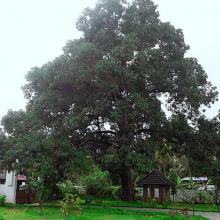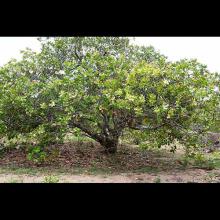Mangifera indica
Common name:
Mango
Genus:
Mangifera
Family:
Anacardiaceae
Order:
Sapindales
Anacardium occidentale
Common name:
Cashew tree
Genus:
Anacardium
Family:
Anacardiaceae
Order:
Sapindales
Rhus typhina
Common name:
Staghorn sumac
Genus:
Rhus
Family:
Anacardiaceae
Order:
Sapindales
Mangifera indica
Common name:
Mango
Genus:
Mangifera
Family:
Anacardiaceae
Order:
Sapindales
Anacardium occidentale
Common name:
Cashew tree
Genus:
Anacardium
Family:
Anacardiaceae
Order:
Sapindales
Rhus typhina
Common name:
Staghorn sumac
Genus:
Rhus
Family:
Anacardiaceae
Order:
Sapindales
Mangifera indica
Common name:
Mango
Genus:
Mangifera
Family:
Anacardiaceae
Order:
Sapindales
Anacardium occidentale
Common name:
Cashew tree
Genus:
Anacardium
Family:
Anacardiaceae
Order:
Sapindales
Rhus typhina
Common name:
Staghorn sumac
Genus:
Rhus
Family:
Anacardiaceae
Order:
Sapindales
Family (Plantae): Anacardiaceae
The Anacardiaceae, commonly known as the cashew family or sumac family, are a family of flowering plants, including about 83 genera with about 860 known species. Members of the Anacardiaceae bear fruits that are drupes and in some cases produce urushiol, an irritant. The Anacardiaceae include numerous genera, several of which are economically important, notably cashew (in the type genus Anacardium), mango, poison ivy, sumac, smoke tree, marula, yellow mombin, Peruvian pepper and cuachalalate. The genus Pistacia (which includes the pistachio and mastic tree) is now included, but was previously placed in its own family, the Pistaciaceae.
Description
Trees or shrubs, each has inconspicuous flowers and resinous or milky sap that may be highly poisonous, as in black poisonwood and sometimes foul-smelling. Resin canals located in the inner fibrous bark of the fibrovascular system found in the plant's stems, roots, and leaves are characteristic of all members of this family; resin canals located in the pith are characteristic of many of the cashew family species and several species have them located in the primary cortex or the regular bark. Tannin sacs are also widespread among the family.
The wood of the Anacardiaceae has the frequent occurrence of simple small holes in the vessels, occasionally in some species side by side with scalariform holes (in Campnosperma, Micronychia, and Heeria argentea (Anaphrenium argenteum). The simple pits are located along the vessel wall and in contact with the parenchyma.
Leaves are deciduous or evergreen, usually alternate (rarely opposite), estipulate (without stipule) and imparipinnate (rarely paripinnate or bipinnate), usually with opposite leaflats (rarely alternate), while others are trifoliolate or simple or unifoliolate (very rarely simple leaves are palmate). Leaf architecture is very diverse. Primary venation is pinnate (rarely palmate). Secondary venation is eucamptodromous, brochidodromous, craspedodromous or cladodromous (rarely reticulodromous) Cladodromous venation, if present is considered diagnostic for Anacardiaceae.
Flowers grow at the end of a branch or stem or at an angle from where the leaf joins the stem and have bracts. Often with this family, bisexual and male flowers occur on some plants, and bisexual and female flowers are on others, or flowers have both stamens and pistils (perfect). A calyx with three to seven cleft sepals and the same number of petals, occasionally no petals, overlap each other in the bud. Stamens are twice as many or equal to the number of petals, inserted at the base of the fleshy ring or cup-shaped disk, and inserted below the pistil(s). Stamen stalks are separate, and anthers are able to move. Flowers have the ovary free, but the petals and stamen are borne on the calyx. In the stamenate flowers, ovaries are single-celled. In the pistillate flowers, ovaries are single or sometimes quadri- or quinticelled. One to three styles and one ovule occur in each cavity.
Fruits rarely open at maturity and are most often drupes.
Seed coats are very thin or are crust-like. Little or no endosperm is present. Cotyledons are fleshy. Seeds are solitary with no albumen around the embryo.
Taxonomy
History
In 1759, Bernard de Jussieu arranged the plants in the royal garden of the Trianon at Versailles, according to his own scheme. That classification included a description of an order called the Terebintaceæ which contained a suborder that included Cassuvium (Anacardium), Anacardium (Semecarpus), Mangifera, Connarus, Rhus and Rourea. In 1789, Antoine Laurent de Jussieu, nephew of Bernard de Jussieu, published that classification scheme.
Robert Brown described a subset of the Terebintaceae called Cassuvlæ or Anacardeæ in 1818, using the herbarium that was collected by Christen Smith during a fated expedition headed by James Hingston Tuckey to explore the River Congo. The name and genera were based on the order with the same name that had been described by Bernard de Jussieu in 1759. The herbarium from that expedition contained only one genus from the family, Rhus.
Augustin Pyramus de Candolle in 1824, used Robert Browns name Cassuvlæ or Anacardeæ, wrote another description of the group and filled it with the genera Anacardium, Semecarpus, Holigarna, Mangifera, Buchanania, Pistacia, Astronium, Comocladia and Picramnia.
John Lindley described the "Essential character" of the Anacardiaceæ, the "Cashew Tribe" in 1831, adopting the order that was described by Jussieu, but abandoning the name Terebintaceæ. He includes the genera which were found in de Candolle's Anacardieæ and Sumachineæ: Anacardium, Holigarna, Mangifera, Rhus and Mauria.
Phylogeny
The genus Pistacia has sometimes been separated into its own family, the Pistaciaceae, based on the reduced flower structure, differences in pollen, and the feathery style of the flowers. However, the nature of the ovary does suggest it belongs in the Anacardiaceae, a position which is supported by morphological and molecular studies, and recent classifications have included Pistacia in the Anacardiaceae. The genus Abrahamia was separated from Protorhus in 2004.(Pell 2004)
Subdivision
The family has been treated as a series of five tribes by Engler, and later into subfamilies by Takhtajan, as Anacardioideae (including tribes Anacardieae, Dobineae, Rhoideae, and Semecarpeae) and Spondiadoideae (including tribe Spondiadeae). Pell's (2008) molecular analysis reinstated the two subfamilies without further division into tribes (Pell 2004). Later Min and Barfod, in the Flora of China (2008) reinstated the five tribes (four in Anacardioideae), and the single tribe Spondiadeae as Spondiadoideae.
Reference: Wikipedia



